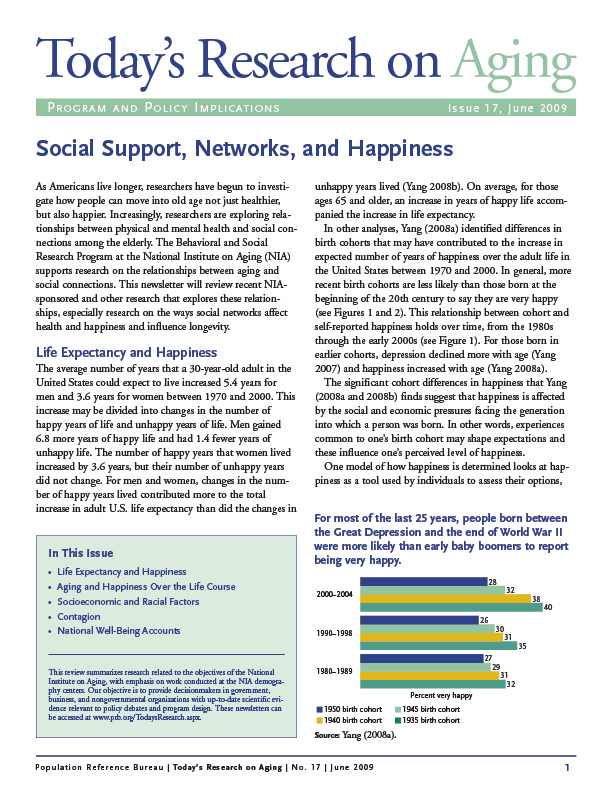As Americans live longer, researchers have begun to investigate how people can move into old age not just healthier, but also happier.
Increasingly, researchers are exploring relationships between physical and mental health and social connections among the elderly. The Behavioral and Social Research Program at the National Institute on Aging (NIA) supports research on the relationships between aging and social connections. This newsletter reviews recent NIA-sponsored and other research that explores these relationships, especially research on the ways social networks affect health and happiness and influence longevity.
Life Expectancy and Happiness
The average number of years that a 30-year-old adult in the United States could expect to live increased 5.4 years for men and 3.6 years for women between 1970 and 2000. This increase may be divided into changes in the number of happy years of life and unhappy years of life. Men gained 6.8 more years of happy life and had 1.4 fewer years of unhappy life. The number of happy years that women lived increased by 3.6 years, but their number of unhappy years did not change. For men and women, changes in the number of happy years lived contributed more to the total increase in adult U.S. life expectancy than did the changes in unhappy years lived.1 On average, for those ages 65 and older, an increase in years of happy life accompanied the increase in life expectancy.
In other analyses, Yang identified differences in birth cohorts that may have contributed to the increase in expected numbers of years of happiness over the adult life in the United States between 1970 and 2000. In general, more recent birth cohorts are less likely than those born at the beginning of the 20th century to say they are very happy. This relationship between cohort and self-reported happiness holds over time, from the 1980s through the early 2000s. For those born in earlier cohorts, depression declined more with age and happiness increased with age.2
References
- Yang Yang, “Long and Happy Living: Trends and Patterns of Happy Life Expectancy in the U.S., 1970-2000,” Social Science Research 37, no. 4 (2008): 1235-52.
- Yang Yang, “Social Inequalities in Happiness in the United States, 1972 to 2004: An Age-Period-Cohort Analysis,” American Sociological Review 73, no. 2 (2008): 204-26.


 ">
">